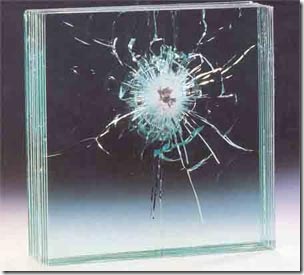Over the course of decades spent designing, engineering, fabricating, and installing bullet resistant barrier systems, Total Security Solutions CEO Jim Richards has found that there are three aspects of bullet proof design that often trip up architects:
- Differentiating Among the Levels of Ballistic Protection
- Understanding Material Constraints
- Estimating Costs
Bullet Resistance Ratings Explained
Underwriter’s Laboratory (UL) has set the industry standard for consumer-grade bullet resistant barriers. These eight levels of bullet resistance indicate the caliber and number of bullets a specific material has been verified to withstand. In practice, most systems will stop significantly more shots than their rating guarantees. For example, this video shows a Level 3-rated Total Security Solutions window stopping 13 shots from a .44 Magnum–that’s ten bullets more than a UL Level 3 rated window is expected to withstand. One detail that is often overlooked: in order for a given barrier system to be considered “UL rated” at a given level, it must be made of UL-rated materials and then separately tested in that specific configuration.
Total Security Solutions offers a very detailed bullet resistant materials cheat sheet, as well as this video tutorial covering the basics of bullet resistant materials and design:
Material Constraints
Depending on the application and threat-level, bullet resistant transparency can be two to three times as heavy as conventional tempered or laminated glass. This can have a major impact on designs, especially interiors. Plan for the added weight accordingly.
More importantly, in contrast to conventional thermoplastics, ballistic acrylic (which runs at least 1.25″ thick) is exceptionally rigid. Many architects make extensive use of tight curves and arches. Those accustomed to working with thinner acrylic may assume that ballistic acrylic can be easily heat formed, or is available in a wide variety of radiuses. This isn’t the case.
For example, Jim recently looked at drawings for a rounded reception desk prepared by an architect with no prior experience using bullet resistant materials. “It was a beautiful counter, but not conducive to bullet proof glass at all. If they’d just opened up that radius a little bit, you’d end up with a lot less pieces.” As designed, the barrier needed to be segmented into 8 or 10 pieces. Because of the thickness of the ballistic transparency, this creates very clear vertical seams where the pieces join, which can become visually distracting. By adjusting the radius of the counter by just ten degrees, Total Security Solutions can design a system that uses only three or four pieces of ballistic acrylic, clearing up sight lines and removing visual clutter.
Material Costs
Finally, ballistically rated materials are more expensive to produce and to fabricate than their conventional counterparts. “People can’t fathom that this material is at least double what normal glass costs. Depending on the scope of work, it can climb from there to three times, even five times more.” Partnering with a bullet resistant design firm early in the process makes it possible to minimize those costs.
Jim and his team have prepared a resource kit for architects, making it easy to quickly come up to speed on bullet resistant design. Or you can contact Total Security Solutions now and get immediate feedback from one of their ballistic designers.

